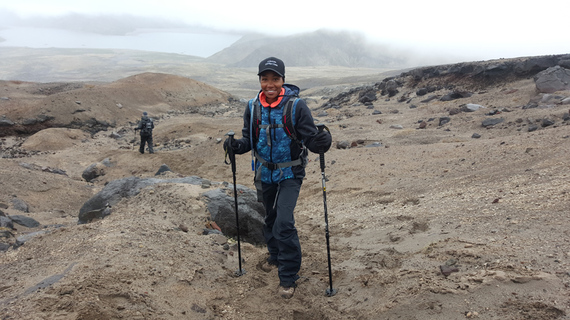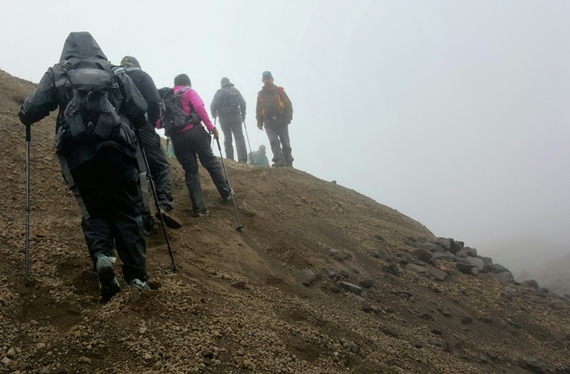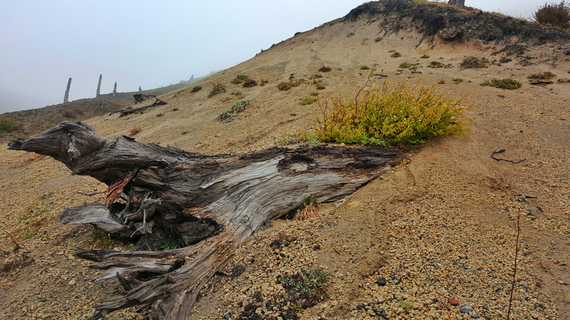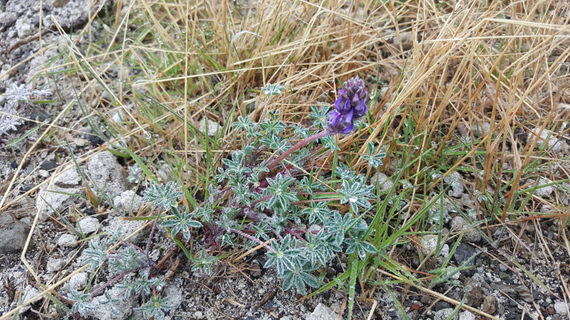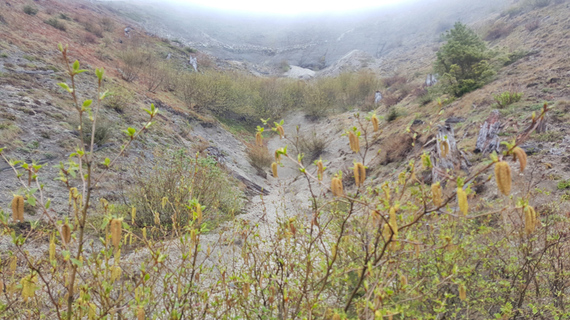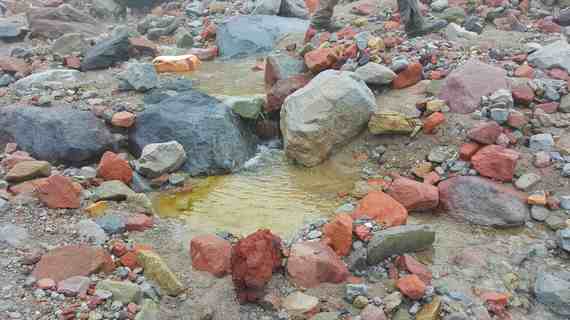When the opportunity arose for me to hike up Mount St. Helens, up to a viewpoint reached by fewer than 200 people, I jumped at the occasion. The objective was to experience the new topography, ecosystem and an array of surfaces while capturing it on the Samsung Galaxy S6 made with Corning Gorilla Glass 4. I joined forces with fellow travel bloggers JD Andrews, Mariellen Ward and Beth Santos to create the "Gorilla 4" team to share in this once in a lifetime trek.
Outfitted with camelback hydration packs, trekking poles and our Galaxy S6 phones, we were ready to begin our journey toward the crater's edge along a mostly uncharted path. We were being led by Mount St. Helens guide Lindsey Karr, staff member Amy Tanska, biologist Dr. John Bishop, and mountain stewards Ron and Linda who were each very knowledgeable about the mountain and the new environment that has emerged over the past 35 years since the eruption.
As we drove up to Mount St. Helens, I felt like a character in a movie set in pre-historic times. It looked like an apocalypse with singed tall standing tree in a dense fog. It seemed practically barren. Cold, misty and 40 degree weather was my welcome to the mountain. Prior to her eruption on May 18, 1980, Mount St. Helens was a dense forest filled with deciduous fir trees and robust vegetation. What I am seeing is a stark contrast.
Dr. John Bishop, professor of Biological Sciences at Washington State University, explained how various areas on Mount St. Helens were scoured down to bedrock, killing all living organisms, soil and anything biological. The only plants that survived were facing away from the eruption and protected by thick layers of snow, ash or tephra. The new plants on Mount St. Helens came from elsewhere and had to be able to survive in the harsh conditions that occurred as the result of the eruption. The lupine was the first plant to colonize there because it is nitrogen fixing and self-pollinating.
Further along the Truman trail, I encountered more patches of lupine, the occasional patch of tiny wild strawberries, and the Indian paintbrush flower. As more vegetation develops on the mountain, the animal and insect diversity increases which has had a negative impact on vegetation development. Beetles, moths, and elk have contributed to this. During our hike, we see elk droppings and learn that their antler rubbing practice on the trees is killing the treetops and retarding their growth.
As we head closer to the edge of the volcano's crater, we go off trail where we hike on top of 2,000 year-old basalt lava flows, through deep ash canyons and up huge boulders. The climbs were pretty steep at times forcing me to put down my trekking poles and use my hands to grip the rough surface of lava rocks to pull myself up. When I pause to capture the beauty and uniqueness of this experience with my phone, I breathe easier knowing that I am doing it on a device with Gorilla Glass 4, Corning's toughest cover glass to date.
The higher we ascend to reach the edge of the crater, the more exhilarating this journey becomes. I feel like a true explorer hiking along this uncharted path to new heights as I experience the new ecosystem that has been developing on Mount St. Helens over the past 35 years. The new life and promise that exists on this sacred mountain is gentle reminder that life after devastation can come in many forms and we must appreciate it, respect it and continue to learn the lessons that mother nature teaches us.
Here's a video of my experience.
Follow more of my adventures here:
www.travelistateri.com
